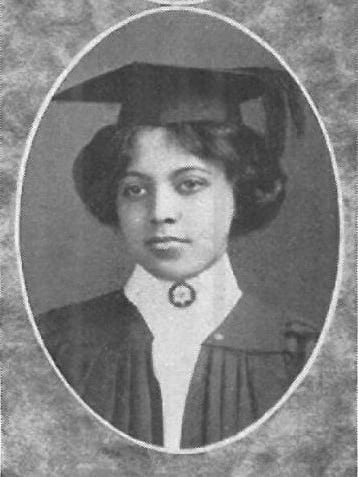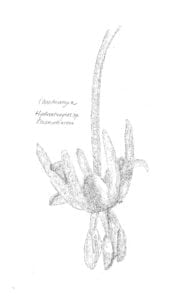
Just over 100 years ago, as World War I raged in Europe, a chemistry professor named Alice Ball was demonstrating the use of a gas mask when something went tragically wrong. The brilliant, young chemist died a few months later at age 24, likely from accidentally inhaling chlorine gas.
The riddles she had solved may be different from what our scientists are working on today, but as we look back at the life and work of this extraordinary African-American woman, we see the drive that is a hallmark of the alumni and faculty of the UW School of Pharmacy. Born in Seattle in 1892, Alice grew up both in Washington state and Hawai’i to middle class parents. Her mother and grandfather were well-known photographers who exposed young Alice to the magic of chemistry in developing photos. We can imagine her wide-eyed excitement in the darkroom as her mother dipped plain paper in a bath of chemical developer to reveal the hidden image.
A top student at Seattle High School, Alice began her scientific career at the University of Washington in 1910. She earned her bachelor’s in pharmaceutical chemistry in 1912 and then earned a second degree in pharmacy in 1914, here at the UW School of Pharmacy.
In less than a year, UWSOP alumna Alice was able to isolate the active ingredients in chaulmoogra oil—a discovery that brought relief to people with leprosy until sulfa antibiotics came into use in the 1940s.
After graduation, she co-authored a paper, “Benzoylations in Ether Solution” in the Journal of the American Chemical Society, received a full scholarship, and became the first African-American woman to earn her master’s degree at the College of Hawai‘i (now University of Hawai‘i). Her master’s thesis research involved extracting the active ingredients from the awa (or kava) root.
Hearing of her work, Dr. Harry T. Hollmann, U.S. Public Health Officer for Hawai‘i, asked her to help solve a mystery. As acting director of the Kalihi leprosy clinic, Hollman was trying to find a treatment for the terrifying disease. At this time, there was no cure and no palatable treatment for leprosy. People afflicted with the disease were quarantined.
Over decades in Hawai‘i, 8,000+ children and adults were taken from their homes in the middle of the night and brought to a camp on Molokai island. Chaulmoogra oil had shown promise in treating leprosy in India and China, but it was water insoluble. It burned when injected under the skin and its acrid taste made it very difficult to ingest.

Hollmann asked Alice if she could extract the active ingredient in chaulmoogra oil, as she did for the awa root. In Headstrong: 52 Women who Changed Science—and the World, author Rachel Swaby writes that Alice ”treated the oil’s fatty acids with an alcohol and a catalyst to kick-start the reaction to create a less viscous chemical compound” (13). Using that process, Alice was able to isolate the ethyl esters from the oil and create an effective therapy.
Her breakthrough was so significant that—at just 23 years old—she became the first woman and first African-American offered an instructor position in chemistry at the College. Her method was used to develop therapies to treat leprosy patients until the 1940s.
Not long after her premature death, college president Arthur L. Dean—without giving credit to Alice for her work—chose to publish what he called the “Dean Method,” for extracting the active ingredient in chaulmoogra oil. In 1922, to right that wrong, Hollmann published an article describing “Ball’s Method,” thus preserving Alice’s leading role in the breakthrough and in pharmaceutical history.
However, even with Hollman’s recognition, Alice’s accomplishments were almost lost in time until Dr. Kathryn Waddell Takara learned about her in the University of Hawai‘i’s archives in 1977, and Stanley Ali, a retired Federal worker, came across her records while doing research on blacks in Hawai‘i.
These historians were essential in ensuring her place as a legend among scientists and UWSOP alumni. We honor Alice Ball, who embodies the spirit of discovery that lives on today in the UW School of Pharmacy students, faculty, and staff.